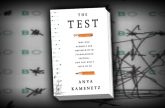Grand Unified Theories (GUTs) have been the rage in the physical sciences for many years.These theories bring all of the forces of physics (except, to date, gravity) together under a single theory. The electromagnetic, weak, and strong interactions all become one as described by a GUT. Physicists dream of bringing gravity into the fold, which would mean they had a Theory of Everything.
This is powerful stuff, and it is hard not to have some physics envy when contemplating the beauty of such all-encompassing theories.
Other sciences also have grand theories. The Linnaean taxonomy of all living things (three kingdoms, divided into classes, divided into orders, then families, genera, and species) has had a remarkable 270-year run, although modified by the other grand theory of biology, evolution, which (like a GUT) is about as grand as a theory can get.
Psychology has had some entries for what would count as grand theories. Psychoanalysis and behaviorism are probably the best known, and both had their day -- and both are still around -- but neither has that much sway in psychology today. That may be because psychology is still too young a science with too much more to discovery before it will have sufficient data to support a genuine grand theory, one that can unite all its disparate elements.
But I doubt it. Psychology (and its subject, all of us) is just too messy and too diverse, with far too many components, factors, issues, levels of analysis, and possibilities. Concocting a theory that would unite group dynamics, love, neurotransmitters, instrumental conditioning, and creativity into a single schema isn’t just an incredibly difficult and complex task requiring more data than we now have. It’s hard to imagine that such a theory could even be possible, no matter how much data and processing power we might one day be able to bring to bear on the problem.
But what about creativity? Do we have -- or should we hope to have -- a grand theory of creativity, one that can bring together all, or at least much, or what we know about creativity?
Right away one runs into definition problems. Many researchers and theorists now subscribe to something like “Creativity refers to anything someone does in a way that is original to the creator and that is appropriate to the purpose or goal of the creator” as a working definition of creativity. That’s broad enough to subsume most other definitions. But should we really expect a single creativity theory to work both for a toddler trying to figure out how to get a lid off a box and a scientist trying to unite gravity with the other three fundamental forces in the universe? Should we expect that theory also to cover a chef planning a menu, a teacher planning a lesson, a conductor planning a concert, and a lover planning a proposal? What about a poet responding to her muse, a painter rendering her vision onto a canvas, or a politician regaling an audience?
What unifies these activities seems to be all about the construction we put on them (they all require creativity, as defined above), not any meaningful similarities in the things one actually does to accomplish them. We see them all as things that involve originality (at least to the person doing them). But is that any reason to suppose that the processes that were involved in these activities have anything in common, or at least more in common than other activities that do not require originality? (Everything we do requires oxygen, neurotransmitters, and sentience, but these are hardly candidate elements for theories of creativity.)
Here’s an analogy: Most of us would agree that throwing a baseball and passing a football have a degree of commonality. But are they like passing the green beans at the dinner table? Or are they like FedEx, or delivering pizzas, or email? That seems to be quite a stretch. But if our category were “ways to get something from one place to another,” they would indeed all fit. Based on that (external) viewpoint, passing a football and delivering a pizza (as well as my other examples) all are part of the same set. We might call them all “delivery operations.” But the fact that they share an observable commonality does not mean that they all involve the same, or even similar, actions on the part of the people who throw baseballs, deliver pizzas, or send emails.
The same is true of actions that do things we consider creative (and this is true whether we use the broad definition I’ve given or a somewhat more restricted definition). The things accomplished are all creative, and the people doing them all did creative things, but the things they did -- and the skills they needed to do them -- need not have any connection or overlap at all.
My goal in this essay has been to plant some seeds of doubt about the possibility of finding a meaningful, large-scale, grand unified theory of creativity. As the title of this column suggests, I believe there is wisdom in thinking small about creativity. I’ll explain what that means as we go along, but I think you’ll find it makes creativity more miraculous, not less. There is much in creativity to think and wonder about, much to mystify us and leave us awestruck; there is also much we can learn about creativity and how to nurture its development; and there is much to be done in the areas of creativity research and training. But we need to have a clearer vision of creativity if we are to really improve our understanding of creativity and its development. Grand theories may mislead us; smaller theories may provide much better light to guide us. In my future columns I’ll describe some of the research that most clearly shows why grand theories of creativity may simply be impossible -- and I’ll also suggest the exciting directions more modest visions of creativity can take us.









